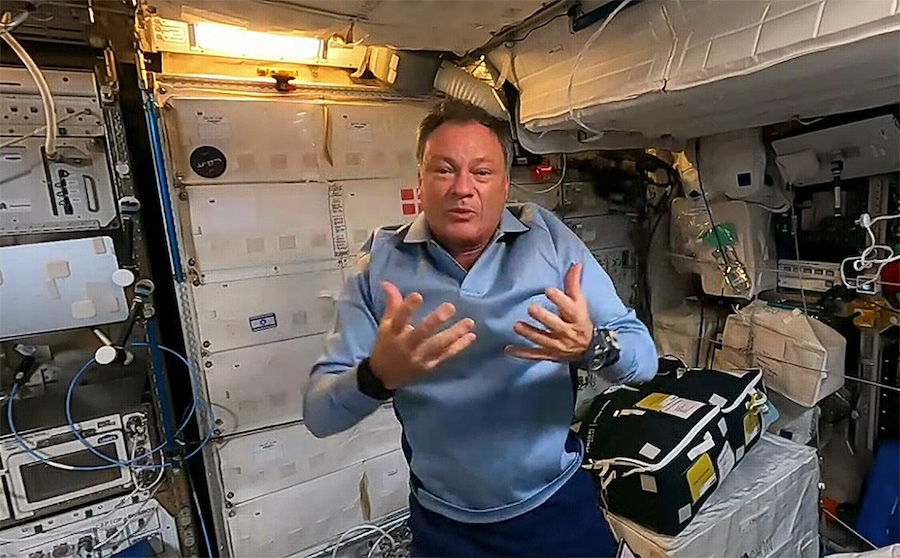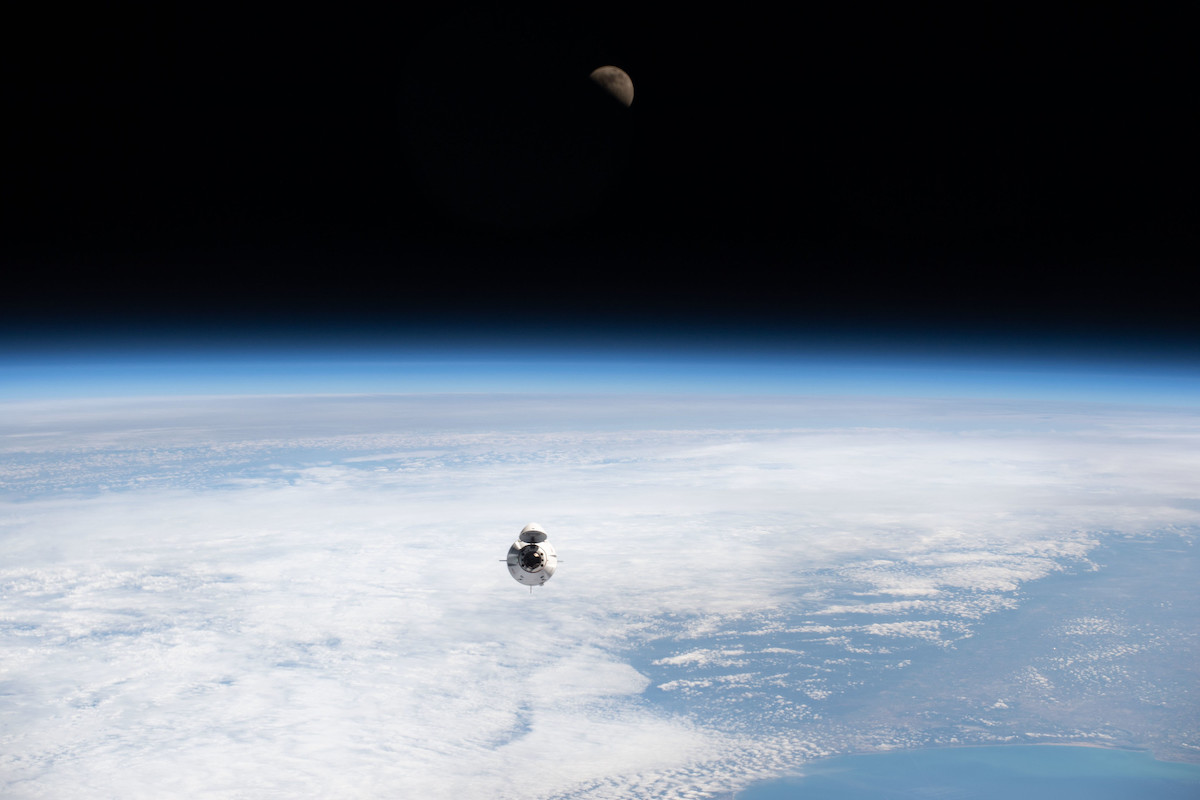Space News & Blog Articles
Commercial crew has no problem adapting to life on space station
STORY WRITTEN FOR CBS NEWS & USED WITH PERMISSION
 Axiom-1 mission commander Michael López-Alegría, a retired astronaut with four previous space flights to his credit, describes the first fully commercial visit to the International Space Station in an interview with CBS News. Credit: Axiom Space
Axiom-1 mission commander Michael López-Alegría, a retired astronaut with four previous space flights to his credit, describes the first fully commercial visit to the International Space Station in an interview with CBS News. Credit: Axiom Space
The first NASA-sanctioned all-private crew to visit the International Space Station has had few problems adapting to weightlessness, but a non-stop schedule of proprietary research and public outreach has left little “window time” for sightseeing, their commander said Wednesday.
Since arriving at the station last Saturday “and ever since, it has been fast paced. I think that’s probably the biggest surprise, just how incredibly quick time goes by,” retired astronaut Michael López-Alegría, the crew’s leader and mentor, said in a space-to-ground interview with CBS News.
We’ve got a very tight timeline to keep up on all the activities that we have planned and it’s a sprint, it’s an all-out sprint. But the guys are doing great, everybody loves microgravity. I mean, you can imagine, it’s a ton of fun. And I think the only surprise is just how hard we’re all working.”
López-Alegría, Ohio-businessman Larry Connor, Canadian entrepreneur Mark Pathy and Israeli Eytan Stibbe, a former F-16 fighter pilot and successful investor, blasted off in a SpaceX Crew Dragon capsule atop a Falcon 9 rocket last Friday, becoming the first all-private crew to visit the International Space Station.
Houston-based Axiom Space paid an undisclosed amount for the ride to orbit and access to the space station. Connor, Pathy and Stibbe paid for their seats while López-Alegría, now an Axiom vice president, is flying on behalf of the company.
With NASA’s blessing, Axiom plans to launch multiple modules that initially will be attached to the space station to serve as a commercial research hub. After solar power and cooling systems are added, the Axiom modules will be detached to fly on their own before the ISS is retired at the end of the decade.
The current Ax-1 mission is the first in a series of planned Axiom flights to help pave the way toward commercial operations in low-Earth orbit, something López-Alegría says is critical.
“We don’t want to abandon low-Earth orbit,” he said. “When I say we, I mean humanity, and specifically NASA and the other international partners. The ISS is a wonderful platform, but it is a machine and it has a lifetime that will expire at some point. And when that does, we want to be ready with the next generation of orbital platform to take over from it.”
A commercial space station, he said, offers clear advantages over government-run outposts, which operate under restrictions that do not apply to the private-sector.
“They have certain restrictions on what they can and can’t do up here,” López-Alegría said. “When you’re a commercial provider, you can do a lot, you can open the aperture and widen the envelope quite a bit and do other things.
“You’ve heard, probably, conversations about entertainment, about brand product placing, about endorsements, about other types of not just manufacturing in small scale or or demonstration of manufacturing capability, but actually manufacturing on a big scale, where you could actually sell those products.”
But, he said, “that isn’t the only game in town.”
“If somebody wanted to come up here and look out the window all day, we would entertain that. I think it’s almost a shame to waste the experience that way, without giving something back, to do some research, educational outreach up here, but that’s certainly an option.”
 SpaceX’s Dragon Endeavour crew capsule — with the moon behind it — approaches the International Space Station for docking April 9. Credit: NASA
SpaceX’s Dragon Endeavour crew capsule — with the moon behind it — approaches the International Space Station for docking April 9. Credit: NASA
The Ax-1 crew chose to carry out a full slate of research, including 25 biomedical experiments and technology development demonstrations amid a full slate of public outreach downlinks. Given the busy schedule, it helps that no one on the crew had problems adapting to weightlessness.
“Often we have a lot of crew members get a little bit of what they call space adaptation syndrome, which includes being a little nauseous,” López-Alegría said. “And that almost didn’t happen to anybody, which is really unusual out of a four-person crew.
“By and large, they’re doing great. I mean, eating and drinking is obviously a little bit different, as is going to the bathroom, naturally. But you know, it’s just a process of adaptation, and so far, I think things are definitely meeting their expectations in terms of enjoyment and our expectations in terms of performance. So it’s been great.”
He said the crew is free to move about on their own in the U.S. segment of the space station, including visits to the cupola compartment where seven large windows provide panoramic views of the planet 260 miles below.
“I would imagine that we would all say we’re not getting enough window time,” López-Alegría said. “By the way, it’s the first time I’ve looked out the cupola and I’m just as amazed as everybody else.”
As for lessons learned, he said planners need to add more time for commercial crew members, even those who aren’t affected by space adaptation syndrome, to get their “space legs” and learn how to efficiently move about in weightlessness.
“I think we underestimated just how hard the adaptation would be and sort of how long it would take,” López-Alegría said. “You know, we have this phenomenon that astronauts call ‘space brain,’ when you get up here, things just take about 33 to 50 percent longer than they normally do. And that’s even more true for people who’ve never been exposed to this environment before.
“So that would be one lesson for sure that I would take back and I think that message is already being heard.”
When you subscribe to the SpaceZE News Feed, we will send you an e-mail when there are new updates on the site so you wouldn't miss them.

